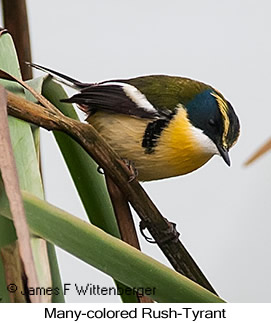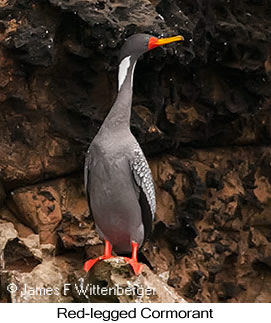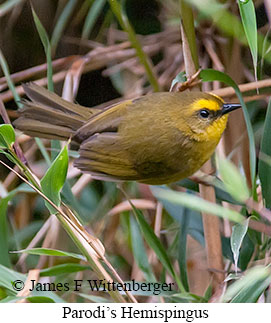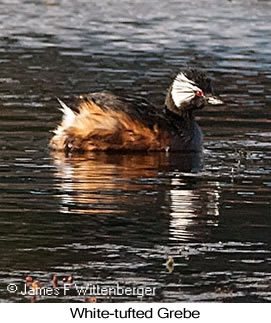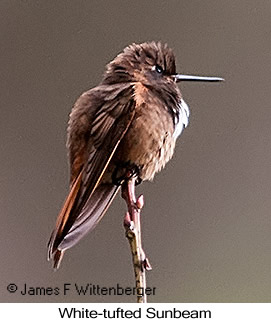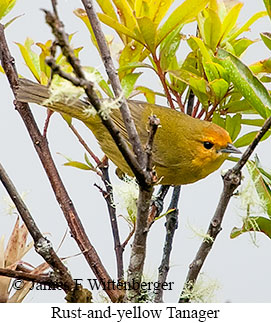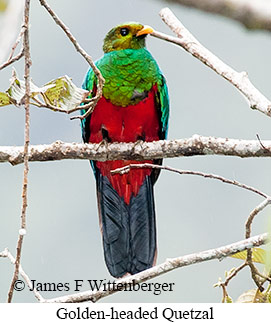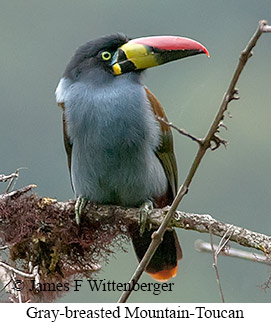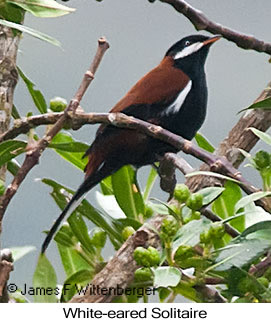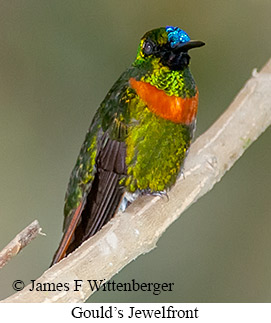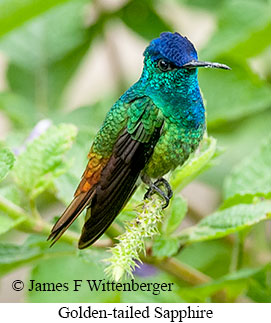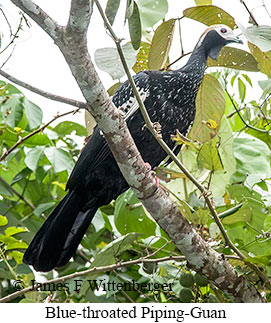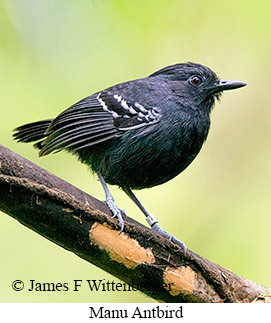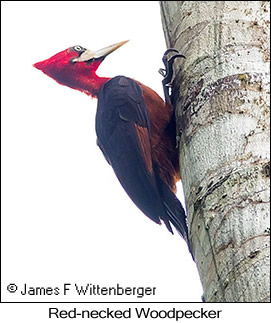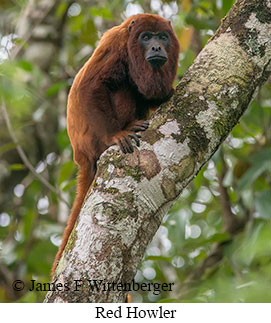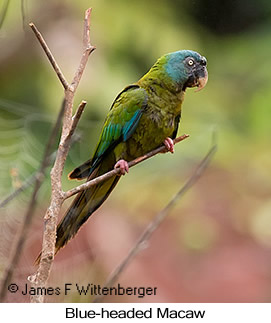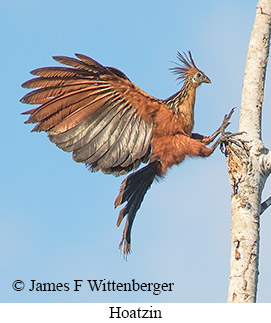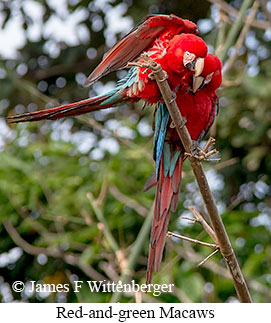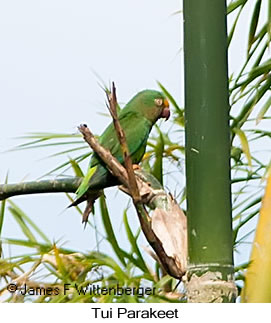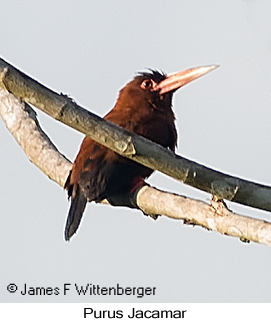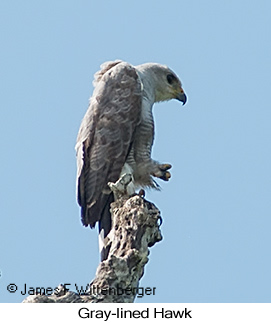PERU BIRDING TRIP REPORT

TRIP REPORT
PERU
| Start: | 07/16/2014 |
| End: | 08/03/2014 |
| Duration: | 19 days |
| #Species: | 538 |
| #Endemics: | 40 |
| #Heard Only: | 36 |
2014 Peru Birding and Photography Tour
TOUR DESCRIPTION
Our birding tour to Peru covered the coastal area south of Lima, Machu Picchu, the highlands around Abra Malaga and Carrizales, Huaypo and Hualcarpe Lakes, Manu Road, the lowlands in the Manu Biosphere buffer zone, and some roadsides outside Puerto Maldonado. The tour was planned as a birding tour but everyone had cameras and was interested in photography, so to a considerable extent it proceeded as a bird photography tour instead. Even so, 536 species of birds were recorded, including a good number of rarities. We also saw 18 species of mammals.
The first day was an add-on to the original itinerary since everyone came in a day early. First stop was the Villa Wetlands, located about ½ hour south of Lima. The wetlands feature open brackish water, bulrushes, some scrub, and adjacent agricultural lands. It's also adjacent to the beach on the Pacific Ocean. On and around the open water we saw Great Grebe, numerous Gray-hooded Gulls, a few Gray Gulls, many striking Belcher's Gulls, a rare wintering Andean Gull and both American and Blackish Oystercatchers. In the bulrushes we had quick looks at Wren-like Rushbird and excellent views of Many-colored Rush Tyrant. Not far offshore we saw large numbers of Red-legged Cormorants and smaller numbers of Guanay Cormorants and Peruvian Pelicans flying mostly north. Other notable birds were Burrowing Owl, Amazilia Hummingbird, Yellowish Pipit, a rare Reichenow's Seedeater, and Peruvian Meadowlark. We continued south another ½ hour to Pucusana, stopping en route at San Pedro where we found only a few Peruvian Thick-knees, which seem to be declining there due to disturbance, and White-cheeked Pintail. At Pucusana we took a boat through the harbor and out into the ocean. The seas were extremely rough, forcing us to turn back before we could get around the rocky cliffs to where Humboldt Penguins are normally found. Even so, we saw and photographed many birds including Peruvian Booby, two Blue-footed Boobies perched on a piling (very rare for this area), Red-legged Cormorant, Guanay Cormorant, several species of gulls, and the striking and very common Inca Tern. Along the sea wall we found a single Surf Cinclodes. A bit farther south, we checked a sandy dunes area where we found Croaking Ground-Dove and several endemic Coastal Miners along with Long-tailed Mockingbird, a female Raimondi's Yellowfinch, and a female Chestnut-throated Seedeater.
Next day we were up very early to catch the 5:20am flight (rescheduled for 5:00am) to Cusco. Upon arrival there, we took a taxi to the train station and caught the 7:25am train to Aguas Calientes, arriving at our hotel by 11:10am. En route we saw 4 Torrent Ducks and several Andean Gulls along the Urubamba River. Mid-day was a good time to do some souvenir shopping. That afternoon we birded a short distance along the river outside town. We had good looks at several endemic Green-and-white Hummingbirds. Other notables included Torrent Duck and White-capped Dippers along the river and 7 Mitred Parakeets that flew overhead.
We were up by 4:30am the following morning for an early start up to Machu Picchu. It was overcast and drizzly, though the rain stopped by the time we reached Machu Picchu around 6:30am. We didn't do a cultural tour of the ruins, just looked at them and took snapshots. Since it was overcast, birding was good. We quickly found a mixed flock just inside the entrance. Species seen included Azara's Spinetail, White-tailed Tyrannulet, White-throated Tyrannulet, Streak-necked Flycatcher, Silver-beaked Tanager, Blue-gray Tanager, Blue-capped Tanager, Golden-naped Tanager, Blue-necked Tanager, Yellow-bellied Dacnis, Black-backed Grosbeak, and Orange-bellied Euphonia. We were busily watching and photographing birds in the flock when a couple of the local cultural tour guides came up and chased us away. We were near the entrance and perhaps a little bit in other people's way, but still they just didn't want us there if we weren't paying them. Hence, we moved on, took some photos of the ruins, and then backtracked to the parking area where we birded down the access road a bit. At first we only heard Inca Wrens back in the thickets, but with effort we had fabulous views of an Inca Wren that popped into the open and perched in response to both our playback and another Inca Wren singing across the road. In the same area we also saw White-bellied Hummingbird, Green-and-white Hummingbird, and Rusty-bellied Flowerpiercer. We took the bus back down to the bridge, where we were dropped off, and walked up to the railroad tracks. We didn't have to walk far to find a mixed species flock. We had good looks and in some cases took photos of Versicolored Barbet, Blue-capped Tanager, Saffron-crowned Tanager, Golden-naped Tanager, and Blue-necked Tanager. After lunch, we took the train to the Incan town of Ollantaytambo in the Sacred Valley. A lot of tourists were there exploring the nearby ruins and buying souvenirs. It was quite windy but a little birding did yield Black-tailed Trainbearer in the hotel garden and Chiguanco Thrush on a stone wall in an adjacent farm.
Up early again, leaving for Abra Malaga in the dark after 4:30am breakfast. We wanted an early start to get to the pass around first light. It rained en route but stopped by the time we reached the pass. To our chagrin, the pass was covered in snow. We continued on to the Carrizales region where we birded roadside stunted cloud forest. First birds we saw were a pair of Andean Geese on an alpine slope, unusual for the area. Next we saw Red-crested Cotinga perched atop a tree. We had excellent looks at Moustached Flowerpiercer, Black-throated Flowerpiercer, Deep-blue Flowerpiercer, and Masked Flowerpiercer. We spent some time photographing the endemic Parodi's Hemispingus, which showed fairly well with some patience. We also saw the very rare (for this area) Gray-browed Brush-Finch, which our guide had seen only once before. We had very good looks at Brown-backed Chat-Tyrant, also rare for this area, and Unstreaked Tit-Tyrant. We drove back uphill to the pass and hiked a trail up the snowfield to check out the Polylepis forest over the crest of the ridgeline. We didn't see a single bird, so this effort turned out to be futile. The only reward for our efforts was some physical exercise and a nice view of the valley below. Back along the road we had better luck. Birds seen included Cream-winged Cinclodes, White-winged Cinclodes, Plumbeous Sierra-Finch, Ash-breasted Sierra-Finch, and Slaty Finch. There was no sign of Royal Cinclodes, our main target bird. We did see a good number of Short-tailed Chinchillas foraging around garbage cast down the slope from the road. On our way back toward Ollantaytambo, we spotted a family group of Gray-breasted Seedsnipe on a gravel pullout along the road. While fairly common, this species is rarely seen so we considered ourselves very fortunate. They quickly scurried down a steep embankment and disappeared. A bit farther along we stopped near Peñas, where we found White-tufted Sunbeam, our main target bird that is only seen on about 20% of visits according to our guide. We also saw Andean Swallow and Swallow-tailed Hummingbird at the same spot.
After lunch in Ollantaytambo, we drove toward Cusco, stopping at Huaypo Lake en route. This is a fairly large lake in the altiplano surrounded by reed beds. Birds of special note we saw there were Puna Teal, Speckled Teal, Southern Pochard, Andean Ruddy Duck, White-tufted Grebe, Mountain Caracara, and Spot-winged Pigeon.
We spent the night in Cusco. Early next morning we drove up past Saqsewaman Archaeological Site outside the city to a small village where we picked up Chestnut-breasted Mountain-Finch, a highland specialty present in only a few localities. We also saw Andean Flicker and a couple other species there. From there we had to drive across Cusco, which took a while due to heavy traffic. Eventually we reached Hualcarpay Lakes. The lakes are being steadily drained so are shrinking in size. Few aquatic birds were present but we did see two Plumbeous Rails come into the open from the reedbeds. We had very good looks at our main target bird, Bearded Mountaineer feeding in yellow Tobacco flowers along the road. Other birds of note were Gray-bellied Hawk, Bare-faced Ground-Dove, the endemic Rusty-fronted Canastero, which we saw very well though only briefly, Small-billed Elaenia, Blue-and-yellow Tanager, Band-tailed Sierra-Finch, Band-tailed Seedeater, Yellow-winged Blackbird, and the rarely seen Thick-billed Siskin. Our guide also saw Mourning Sierra-Finch, missed by everybody else. We continued along the upper stretches of Manu Road, largely above tree line, to Wayqecha Biological Station. It rained much of the way. En route we saw a pair of Andean Guans, several Puna Ibis and Black Flowerpiercer along the road. In the scrub habitat along the road above Wayqecha, we had very good looks at the endemic Peruvian Piedtail, Rusty-fronted Thistletail, Golden-collared Tanager, and Masked Flowerpiercer. A bit farther along we had good looks at a pair of Gray-breasted Mountain-Toucans but couldn't get decent photos as it was very overcast. We arrived at Wayqecha before dark, about 5:00PM. Accommodations there have been upgraded and are now much better than previously.
Next morning we departed at 6:00am after early breakfast and went downslope a ways where we spent a couple hours birding. We found a good mixed species flock that included White-throated Tyrannulet, Rust-and-yellow Tanager, Grass-green Tanager, Blue-capped Tanager, Blue-and-black Tanager, and Black-faced Brush-Finch. We also saw Hooded Mountain-Tanager not far from where we saw the flock. We then went back up the road, hoping to beat the road closure caused by construction crews. We had to wait a half hour, not as bad as later in the morning. We drove all the way back up to Acjacuna checkpoint, a site we had to skip the previous afternoon due to rain. We found our main target bird, the endemic Creamy-crested Spinetail, with a little effort. On the way back down the road we saw two Plushcaps, dazzling bronze on the heads in the bright sunlight, a prize bird on any tour to the area. Other birds of note we saw included Spix's Guan, Gorgeted Sunangel, Tyrian Metaltail, Gould's Inca, Great Sapphirewing, Chestnut-breasted Coronet, White-banded Tyrannulet, Highland Elaenia, Rufous-breasted Chat-Tyrant, Brown-backed Chat-Tyrant, Superciliared Hemispingus, Three-striped Hemispingus, Scarlet-bellied Mountain-Tanager, Blue-backed Conebill, and Capped Conebill. Our guide also saw a Chestnut-bellied Mountain-Tanager, missed by the rest of us.
After lunch we checked out of Wayqecha and drove back downslope toward the San Pedro area and Cock-of-the-Rock Lodge. We found several mixed flocks en route. Certainly a highlight was a Slaty Tanager in one of the flocks. Other flock members included Lineated Woodcreeper, a rare Slaty Elaenia, Ochre-bellied Flycatcher, Variegated Bristle-Tyrant, Marble-faced Bristle-Tyrant, Saffron-crowned Tanager, Capped Conebill, Common Chlorospingus, Short-billed Bush-Tanager, Black-backed Grosbeak, and Purple-throated Euphonia. In addition, we saw a roosting Lyre-tailed Nightjar tucked back into a crevice in a cliff, Long-tailed Sylph, Rufous-capped Thornbill, a beautiful male Golden-headed Quetzal perched in the open for a great photo op, a rarely seen Chestnut-tipped Toucanet, a striking Gray-breasted Mountain-Toucan perched not far off the road for a wonderful photo op, Crimson-mantled Woodpecker, Laughing Falcon perched along the road, an endemic Marcapata Spinetail lurking in thick underbrush, a rare Andean Tyrant, White-collared Jay, and a rarely seen White-eared Solitaire that posed in a tree adjacent to the road. We arrived at Cock-of-the-Rock Lodge about 5:00PM, by which time it was rather misty and cloudy.
We stayed two nights at Cock-of-the-Rock Lodge, giving us a full day to explore the area. It was bright and sunny, so few flocks were in evidence, and those were moving through the forest rather rapidly. Highlight of the morning was certainly a rarely seen first year Black-and-chestnut Eagle perched not far off the road. It was there quite some time and offered spectacular photo ops. In the same location we saw an adult Solitary Eagle perched in a tree in the valley below. Back at the lodge shortly before lunch, a mixed species flock went through the grounds. Species included Lemon-browed Flycatcher, Golden-crowned Flycatcher, Silver-beaked Tanager, Fawn-breasted Tanager, Orange-eared Tanager, Paradise Tanager, Yellow-bellied Tanager, and Purple Honeycreeper. At the feeders outside the dining room we saw Silver-beaked Tanager, Golden Tanager, Buff-throated Saltator, Russet-backed Oropendola, and Purple-throated Euphonia. The main hummingbirds were Sparkling Violetear, Violet-fronted Brilliant, and Many-spotted Hummingbird. A single Speckled Hummingbird also appeared once at the feeders.
The Cock-of-the-Rock lek once located on lodge property is no longer there, so we drove uphill in search of that species after lunch. It was overcast and threatening rain. One member of the group saw an Amazonian Umbrellabird fly across the valley, missed by the rest of us. We had good looks at a perched and then flying male Andean Cock-of-the-Rock. Birding was slow but we did pick up Collared Trogon, Golden-olive Woodpecker, Black-eared Hemispingus, Orange-eared Tanager, and Blue-capped Tanager.
Next morning we left at 6:30am and headed downslope. It was sunny so bird activity was slow. We did encounter a couple mixed flocks. Shortly after we spotted one of those, I saw a black bird fly into a bush near the road. The guide thought it was probably a cacique, but upon closer inspection it turned out to be a female Amazonian Umbrellabird. It perched long enough in the open for us to take photographs. By then, the flock was gone. We heard a Yungas Manakin but couldn't bring it into the open with playback. Too many birders have been trying the same thing lately so the bird is difficult to find now. At one stop we saw a Crested Eagle soaring above a tree-covered ridgeline. We had good looks before it disappeared behind the ridge.
After lunch at a restaurant in the lowlands, we stopped at a stakeout for Great Potoo. Other birds seen during the morning included Little Woodpecker, Lineated Woodpecker some distance from the road, Bluish-fronted Jacamar, Chestnut-backed Antshrike, Stripe-chested Antwren, Spot-winged Antbird, White-crested Elaenia, Slaty-capped Flycatcher, Scale-crested Pygmy-Tyrant, Purplish Jay, Violaceous Jay, Citrine Warbler, Two-banded Warbler, Magpie Tanager, Orange-eared Tanager, Paradise Tanager, Golden Tanager, Spotted Tanager, Bay-headed Tanager, Yellow-browed Sparrow, Yellow-throated Chlorospingus, White-winged Tanager, Dusky-green Oropendola, and Orange-bellied Euphonia. We also saw a Tufted Capuchin Monkey feeding in a tree along the road.
From Atalaya we took the boat 10 minutes to Amazonas Lodge. On the short walk from the landing to the lodge we picked up Bluish-slate Antshrike, a female Black-throated Antbird, Chestnut-winged Hookbill, and Wing-barred Piprites. We spent the rest of the afternoon photographing birds around the feeders outside the lodge. Notable hummingbirds included White-necked Jacobin, which constantly harassed the other species, Rufous-crested Coquette which feeds on the Verbena flowers rather than at the feeders, Gould's Jewelfront, Blue-tailed Emerald, Violet-headed Hummingbird, Gray-breasted Sabrewing, Sapphire-spangled Emerald, and Golden-tailed Sapphire. Also present were Black-fronted Nunbird, nesting Chestnut-fronted Macaws, Purplish Jay, Black-billed Thrush, Buff-rumped Warbler, Red-capped Cardinal, Masked Crimson Tanager, Silver-beaked Tanager, Bananaquit, Buff-throated Saltator, and Russet-backed Oropendola. We had a small flock of Military Macaws fly overhead, the only sighting of this species during the tour. We also saw a large herd of White-lipped Peccaries cross the trail at the far end of the clearing that afternoon. That night a cold front moved in, which affected the next several days of the tour.
After heavy rains during the night, the morning dawned dreary and off-and-on drizzly. We walked a short trail and saw many Hoatzins on an oxbow lake. Bird activity was low but we did ferret out a Rusty-fronted Tapaculo, which popped out briefly onto the trail in full view, and White-browed Antbird. We went back to the lodge where we were able to find Crimson-crested Woodpecker, White-bearded Hermit, Koepcke's Hermit, Plain-crowned Spinetail, Yellow-bellied Dacnis, and Orange-backed Troupial near the lodge. We went back out on a trail later in the morning after the rain dissipated and found Scarlet-hooded Barbet and a Lemon-throated Barbet in the same tree, along with Golden-Olive Woodpecker and Chestnut-crowned Foliage-gleaner. Not long after, a pair of endangered Blue-headed Macaws flew overhead, along with a Scaly-naped Parrot that usually isn't at such low elevation. That afternoon we went out again but birding was very slow. We did have excellent looks and a photo op of Blue-throated Piping-Guan and saw a female White-throated Woodpecker, Buff-throated Foliage-gleaner, Orange-fronted Plushcrown high in the canopy, Yellow-crowned Tyrannulet, Johannes's Tody-Tyrant, Bare-necked Fruitcrow flying over, Band-tailed Manakin, a secretive Blue-black Grosbeak, and Yellow-rumped Cacique.
July 26 (day 10) was overcast early, but the sun came out by 9:15am. We were up early and out birding by 6:05am. The guide spotted a Ringed Antpipit, missed by the rest of us and unresponsive to playback. We had good looks at Long-billed Woodcreeper, Black-banded Woodcreeper, and Buff-throated Woodcreeper. We didn't see many antbirds, though we had good looks at the fairly common Bluish-slate Antshrike again. Some of us had brief but good looks at a Red-billed Scythebill, which didn't stay long before flying deeper into the forest. Back at the lodge our guide found a nesting pair of Amazonian Violaceous Trogon nesting in a hole not far from the main clearing. We also saw Cinnamon-breasted Woodcreeper and Plain-tailed Spinetail behind the lodge. I walked part way up the trail leading to the observation platform and had decent looks at Plain-winged Antshrike, a bird seen again later in the tour by the others. After lunch we took the boat downstream to Pantiacolla Lodge, taking about 2½ hours to get there. We saw the usual riverside species. Notable were Fasciated Tiger-Heron, the only one seen on the tour, Capped Heron, Roseate Spoonbill, (rare for this area ), a rare White-rumped Swallow, the uncommon White-thighed Swallow, very common White-banded Swallow, and a surprisingly scarce Amazon Kingfisher.
Our first morning at Pantiacolla we were up by 4:30. It was overcast and dark with drizzle and rain off and on all morning, which greatly affected the birding. We birded the bamboo stands along the Tinamou Trail and soon spotted a Great Tinamou feeding on the trail. It was not at all shy, and we photographed it in the very low light using high ISO settings. With some effort and playback, we had good looks at Manu Antbird. We heard Goeldi's Antbird in the thick bamboo but couldn't bring it into the open. A bit farther along the trail we heard something crashing through the forest like a herd of elephants. A pair of Tapirs burst into the open in front of us, crossed the trail, and charged past not 30 ft away. On our way back to the lodge, we had good looks and a photo op of Brown Titi Monkey (a form of Dusky Titi Monkey) followed by views of Common Squirrel Monkey. Since birding was slow and the rain had picked up, we returned to the lodge by 9:00am and waited for the rain to subside. We went back out birding later in the morning once the rain had subsided, but birding remained slow.
Around the lodge we had good looks at an immature male Festive Coquette as well as Violet-headed Woodnymph feeding on Verbena flowers in the lodge clearing. Around mid-day a mixed flock moved through the clearing by the lodge. Birds seen included Spot-winged Antshrike, Pygmy Antwren, Striated Antbird, White-lined Antbird, Spot-winged Antbird, Olivaceous Woodcreeper, Wedge-billed Woodcreeper, Strong-billed Woodcreeper, Buff-throated Woodcreeper, Yellow-crowned Tyrannulet, and Red-eyed Vireo. We also saw a couple Blue-and-yellow Macaws fly overhead and a large number of migrating Chestnut-collared Swifts.
After lunch, we went out on the trails again. The guide saw Rufous Motmot and Creamy-bellied Thrush, both missed by the rest of us. We did see a female Plain-throated Antwren and Black-throated Nunbird. We also had brief looks at Brown Titi Monkey again, and a couple people saw Brown-mantled Tamarin (also called Saddleback Tamarin).
Next morning we woke up to steady rain that didn't quit until 9:30am. We went back out on the Tinamou Trail and soon saw Yellow-tufted Woodpecker. We also saw Chestnut-tailed Antbird and Goeldi's Antbird in the bamboo stands. We saw several Blue-and-yellow Macaws perched atop a bare tree and had rather distant looks at a Scarlet-hooded Barbet and good though also rather distant looks at Thrush-like Wren. In the same general area we had excellent looks at Red-necked Woodpecker on a bare tree branch. While walking back to the lodge we saw Scarlet Macaws perched in a tree and a lone Channel-billed Toucan.
Back at the lodge we had a couple flocks come through the clearing. Species seen included Plain-winged Antshrike, Pygmy Antwren, Sclater's Antwren, Long-winged Antwren, Gray Antwren, White-lined Antbird, Olivaceous Woodcreeper, Slender-footed Tyrannulet, Streaked Flycatcher, Palm Tanager, Yellow-bellied Tanager, Yellow-bellied Dacnis, Purple Honeycreeper, and Green Honeycreeper. After lunch we saw a flock outside the lodge dining room mobbing in response to playback of Tawny-bellied Screech-Owl. Species seen included Paradise Tanager, Green-and-gold Tanager, Yellow-bellied Tanager, Spotted Tanager, Masked Tanager, Yellow-bellied Dacnis, and Blue Dacnis. Not long after, a family group of Red Howler Monkeys moved through the trees on the edge of the clearing around the lodge. Thereafter, the guide and I went birding on the Monk-Saki Trail. We had decent looks at Dusky-throated Antshrike and a female Black-faced Antbird. We also saw a Red-headed Manakin, which has a very restricted range in this part of Peru, plus good looks at Amazonian White-tailed Trogon, White-fronted Nunbird, and Gray Antwren, distant looks at a group of Purple-throated Fruitcrows silhouetted against the sky, and Cinereous Mourner (seen by the guide only).
We were up early next morning to visit the nearby macaw clay lick. We arrived at the usual observation site across the river to find it entirely washed away by flooding the previous rainy season. Our guide noticed a shelter roof across the river, so we went across in the boat and walking up a short trail to an improvised blind. There we had a close view of the clay lick and good photo ops of endangered Blue-headed Macaws coming in. They mainly perched in nearby trees and only briefly went down to the ground to pick up clay. Also present were a few Chestnut-fronted Macaws. Many Blue-headed Parrots gathered in the tree tops farther away but never came down to the clay embankment. We returned to the lodge by 7:30am, had breakfast, and departed for the long 6-hour boat trip downstream to Tambo Blanquillo on the Manu River. The most notable birds seen en route were a couple Horned Screamers along the river and a King Vulture soaring overhead. We arrived at the lodge about 2:30pm. The river washed out the original landing site and changed course, so it was a considerable walk across a sandbar to reach the lodge. Lots of sand flies were around so we all got bitten up a bit with itchy welts during our stay.
After arrival, we went birding on a trail leading to an oxbow lake and watched birds from a dock on the lakeshore. Notable birds seen there were a single Orinoco Goose, a pair of Sunbitterns flying across the lake and into cover, Green Ibis, Wattled Jacanas on the far side of the lake, many Hoatzins perched in trees along the shoreline, and Drab Water-Tyrant along the shoreline. On the way back to our boat, we saw Great Potoo, Blue-crowned Trogon, Striated Antbird, Plain-brown Woodcreeper, and Spotted Tody-Flycatcher. Along the river we saw Ladder-tailed Nightjar as well as more common birds.
July 30 (day 14) was hot and sunny. We were up at 4:30am and left at 5:00am for the Blanquillo parrot/macaw clay lick. The stars were out when we left by boat, our first clear, sunny day in a while. The viewing platform is large and well constructed, even offering semi-flush toilets, but requires about a mile walk on a level trail to reach. Parrots come into the lick first, arriving about 6:30am. First to arrive were Yellow-crowned Parrots, followed by many Blue-headed Parrots. Shortly thereafter, a few Orange-headed Parrots also appeared. The latter species is rather shy compared to the others. We had a good vantage point for photographs as the birds staged in nearby trees. The parrots were mostly gone by 7:30am. A couple Scarlet Macaws appeared but then left. Around 8:45am, a good number of Red-and-green Macaws appeared and eventually went down to the clay lick. We spent quite some time watching and photographing the macaws, which showed some wonderful behavior including intimate gestures between pairs and antagonistic interactions on the lick itself. They were there until about 9:45-10:00am. After the macaws were mostly gone, a Tui Parakeet arrived. This species rarely visits the clay lick and was a life bird for our guide. Other birds seen included a Roadside Hawk that perched on a branch overhanging the lick for some time and two King Vultures soaring above. Near the viewing platform in open Cecropia trees we saw several Hooded Tanagers. On the way back to our boat, we saw a Common Potoo actually awake and preening itself. It was a wonderful photo op. We also saw White-throated Tinamou perched in a bush in the forest understory and Black-tailed Trogon, Amazonian Motmot, White-throated Toucan, Chestnut-backed Antshrike, and Bluish-slate Antshrike. Along the river we saw many Sand-colored Nighthawks on the sandbars and flying above the river along with a couple Black Caracaras perched on a log.
That afternoon we visited an oxbow lake, paddled around on a wooden platform atop a catamaran by our local boatmen. Notable birds we saw included a pair of Least Grebes, rare for the area, a few Horned Screamers, a Limpkin (rare for the area), Hoatzins, a Silvered Antbird in the underbrush overhanging the shoreline, Black-capped Donacobius, and Wattled Jacana. We also saw 2 groups of Giant Otters and got good photos when they reared up out of the water because our boat was blocking the channel they wanted to swim through. We arrived back at the lodge shortly before dark.
Next morning we were up by 5:00am for a birding excursion to a different oxbow lake. The lake was perhaps better visited in the afternoon, as the sun was in our eyes all morning. We had opted for a morning visit because the other site, the 47.6m high canopy tower has a lot of sweat bees around it during morning hours. Notable birds we saw were Rufous-sided Crake, common and in early morning hours out in the open, Least Grebe, Rufescent Tiger-Heron, and two pairs of Sungrebes that quickly swam to cover under overhanging branches along the shoreline. We had very good looks at Purus Jacamar, a local specialty not generally seen anywhere else, and a single Pale-eyed Blackbird, a rarity currently expanding its range into southeastern Peru. Also seen were White-collared Swifts, Amazonian Swifts, the latter a poorly known and possibly rare species of the lowlands, and Pale-rumped Swift. On the way back, one tour participant had a quick look at a Pale-winged Trumpeter cross the trail in front of us. That afternoon we returned to the same trail, where the guide had a brief look at the trumpeter, this time missed by everyone else. We birded our way to the canopy tower and climbed part way up it. Bird activity seemed a bit slow and our one participant who went with us didn't want to climb to the top, so I also opted out. As a result, we missed the Amazonian Pygmy-Owl and perhaps other species. On the way back our other participant had a brief look at the trumpeter, which I missed once again. In the same place, our guide spotted a Tawny-bellied Screech-Owl perched in dim light of the forest interior. We had excellent looks at it. Also seen were Black-tailed Trogon, White-fronted Nunbird, Crimson-crested Woodpecker, Black-faced Antbird, Rufous-capped Antthrush, which came briefly into the open on a log next to the trail in response to playback, Elegant Woodcreeper (seen by the guide only), Purple-throated Fruitcrow, good views of Screaming Piha in a tree top, Cinereous Mourner, and Red-crowned Ant-Tanager.
August 1 (day 16) was mostly a travel day. We slept in until 6:30am, had breakfast, and departed by boat downstream toward Puerto Maldonado. It takes about 3½ hours by boat to reach Puerto Colorado, a town supported by gold mining operations along the Rio Madre de Dios. En route we saw two Orinoco Geese, a Great Black-Hawk, and a rare Gray-lined Hawk along the river in addition to the usual egrets, terns, and swallows. From Puerto Colorado we did a 45-min land transfer by taxi, and took a boat across another river, where we were met by a driver for the 2½ hour drive to Puerto Maldonado.
We spent our last morning in Peru birding roadsides outside Puerto Maldonado. We quickly spotted a Burrowing Owl perched on the crest of a roof inside the city. Outside town we found a Two-toed Sloth hanging from a telephone wire. We eventually found our main target bird, White-throated Jacamar after the bird flew at earlier stops before we could see it. The guide saw a distant Agami Heron, missed by everyone else. We saw another Limpkin and a family group of Brazilian Teal, which has recently expanded its range into southeastern Peru. We also saw Ruddy Ground-Doves flying across the road, the only ones seen on the tour, and Blue-black Grassquit, also the only one seen during the tour. We missed Red-breasted Blackbird, which is no longer in its usual stakeout due to recent construction activity. That afternoon we had an uneventful flight back to Lima, followed by a long wait and then overnight flights home.
BIRDING LOCALES
